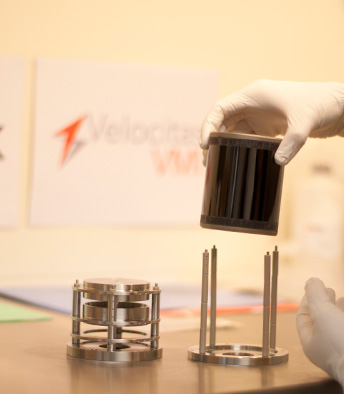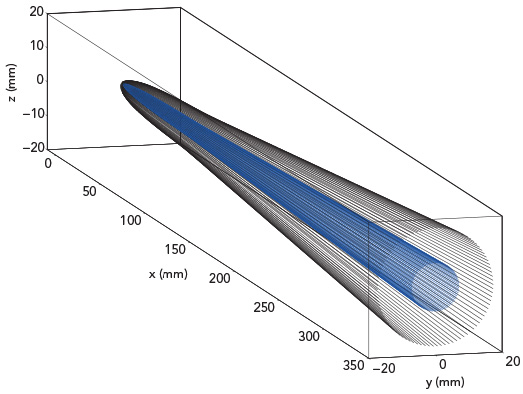

Velocitas VMI Ion Optics Design and Development
Velocitas VMI has in-house expertise on ion optics modelling and design, with extensive knowledge of Simion and MASIM 3D charged particle simulation software. We are dedicated to the development of novel imaging applications and work closely with the research communities through collaborative research and training networks.
Our collaborations have led to the development of a series of ion optics designs, each offering different functionality for optimum performance in the laboratory:
PRIME
A classic assembly with three electrodes (Repeller, Extractor and Ground) specifically designed for high energy photoelectron imaging (up to 100 eV) in femtosecond and attosecond experiments.
Developed in collaboration with Prof Marc Vrakking at MBI, Berlin
DOUBLE PRIME
An innovative design with four electrodes (Repeller, Extractor, Lens and Ground), incorporating shaped Repeller and Extractor and stabilising electrodes for ultimate field definition and robust velocity mapping operation.
Developed in collaboration with Prof Mike Ashfold at University of Bristol
High Density
A pulsed valve is integrated into the Repeller to offer a much higher gas density at the laser focus. In attosecond photoionisation experiments, this provides an order of magnitude increase in signal intensity.
Developed in collaboration with Prof Marc Vrakking at MBI, Berlin
Slice
An elongated acceleration region increases the arrival time of the Newton sphere at the detector. Coupled with the Velocitas VMI Vacuum Imaging Detector and Gate Module, this offers excellent slicing capabilities with high velocity resolution.
Developed in collaboration with Prof Mike Ashfold at University of Bristol
Further design and development projects include:
An add-on zoom lens, offering up to x 10 magnification of the Ion image.
The option of advanced set-ups; for example, crossed molecular beam imaging.
Above: Simulated trajectories for two groups of charged particles, where the radius of detection is proportional to the ion's nascent velocity.
The image shows ion trajectories calculated in a Simion model of VMI DOUBLE PRIME. For visual purposes, the ions are born in a volume at x ~ 0 with ejection velocities in the plane of the detector. The two groups of ions form high resolution rings on the detector at x = 350 mm.
Simion, along with programming language Lua, is used to optimise electrode geometry, mounting options and operational voltages, leading to the advanced ion optics designs. A second ion optics modelling package, MASIM 3D, is used to verify results. Unlike Simion, MASIM 3D uses Boundary Element Method calculations to accurately define electrode geometries.
